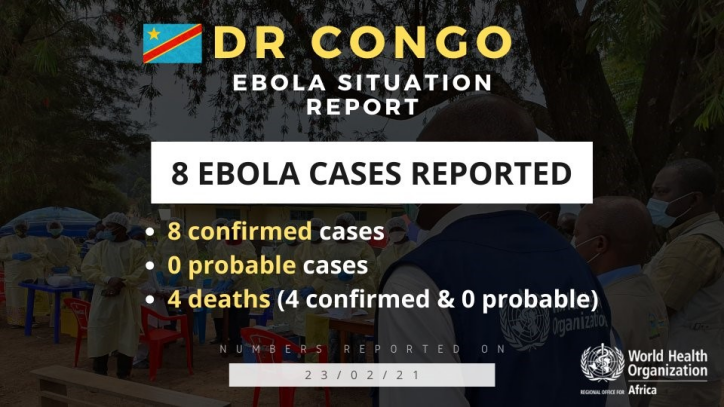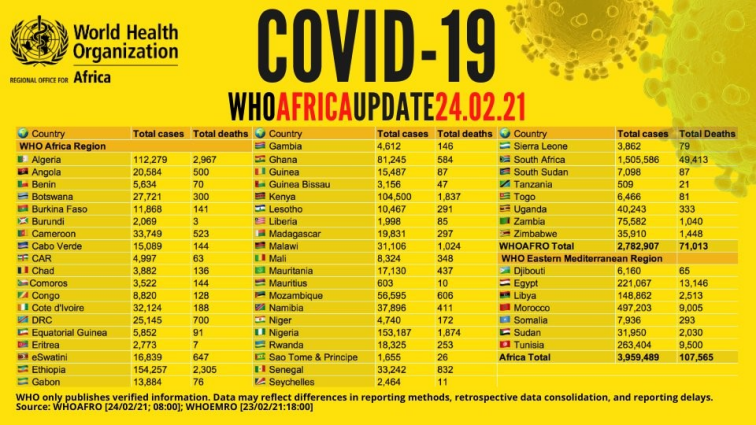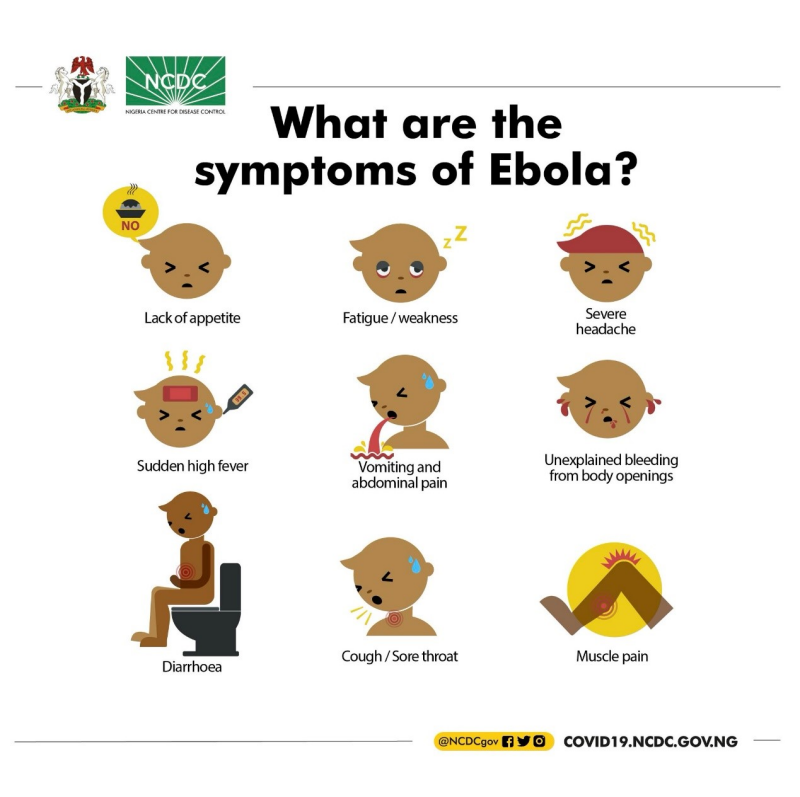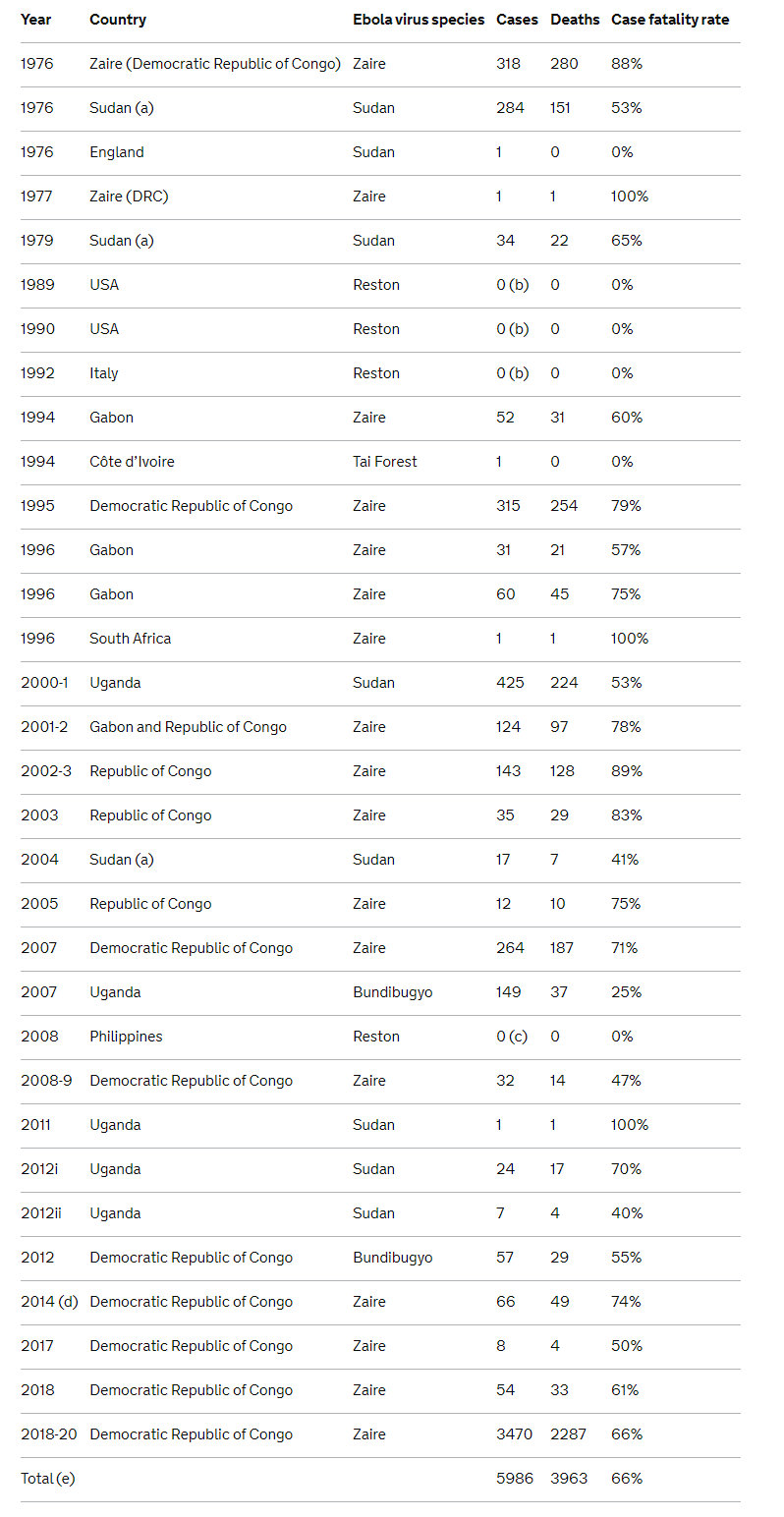Ebola, one of the most fatal viruses that has ever recorded in human civilization resurged in Guinea and Congo in February of 2021 with 12 confirmed cases, 5 probable cases and 10 deaths in total recorded by Feb.23, which sparkled the serious concerns of thehealth administrations and organizations around the globe in the face of ongoing COVID-19 pandemic in those regions.

Source: WHO African Region Official Twitter Account

Source: WHO African Region Official Twitter Account

Source: WHO African Region Official Twitter Account
What is Ebola Virus?
Ebola virus can cause an acute, serious disease which result in high fatality rate. After entering the body, it can infect cells and kill the cells. As the virus spreads through the whole body, it can cause very serious damage to the organs and immune system.

What are the symptoms of Ebola?
This disease caused by Ebola virus is named EVD (Ebola Virus Disease) or EHF (Ebola Hemorrhagic Fever), always has a rapid course. Signs and symptoms typically start between two days and three weeks after contracting the virus with a fever, sore throat, muscular pain, and headaches. Vomiting, diarrhoea and rash usually follow, along with decreased function of the liver and kidneys. At this time, some people begin to bleed both internally and externally. The disease always has a high risk of death. This is often due to low blood pressure from fluid loss, and typically follows 6 to 16 days after symptoms appear.

Source: Nigeria Centre for Disease Control (NCDC) Official Twitter Account
What is the transmission of the Ebola virus?
Ebola is introduced into the human population through close contact with the blood, secretions, organs or other bodily fluids of infected animals such as fruit bats, chimpanzees, gorillas, monkeys, forest antelope or porcupines found ill or dead or in the rainforest.
Ebola then spreads through human-to-human transmission via direct contact (through broken skin or mucous membranes) with:
- Blood or body fluids of a person who is sick with or has died from Ebola
- Objects that have been contaminated with body fluids (like blood, feces, vomit) from a person sick with Ebola or the body of a person who died from Ebola
What is the history ofEbola Virus Disease?
The disease first emerged in 1976 in almost simultaneous outbreaks in the Democratic Republic of the Congo (DRC) and Sudan (now South Sudan).
Between 1979 and 1994 no cases or outbreaks were detected, however since that time outbreaks have been recognized with increasing frequency (see table below).
The largest outbreak to date took place in West Africa between March 2014 and June 2016, affecting primarily Guinea, Liberia and Sierra Leone. Over 28,000 cases were recorded.

Confirmed cases and outbreaks of Ebola virus disease to 2020 (excluding the West Africa outbreak)
What should we do in the face of constant virus outbreak in the worldwide?
“The only thing we have to fear is…fear itself”, said by Franklin D. Roosevelt in 1933, the constant outbreak of the pandemic in the worldwide stirs a series of concerns and horrors among every class of people regardless of race, religion and skin color, however, to cope with the global pandemic, the least thing we should do is to be panic.
Ebola and COVID-19 are the viruses that causing people’s fear by their dramatic ways of spreading and strong abilities of killing virus hosts. It is crystal clear that we should try our best to ensure safety and health by avoiding global travel, wearing face mask, washing hands, keeping social distance and doing exercising in our daily life.
What’s more, the governments in different countries should educate their people to raise the awareness of infectious disease at the same time enhance the collaboration relationship with World Health Organizations to set up health monitoring, tracing, diagnosis as well as treatment system.
The effective and quick diagnosis of Ebola is critical to prevent the spread of Ebola
According toUS Centers for Disease Control and Prevention, diagnosing Ebola virus disease (EVD) shortly after infection can be difficult. Early symptoms of EVD such as fever, headache, and weakness are not specific to Ebola virus infection and often are seen in patients with other more common diseases, like malaria and typhoid fever.
To determine whether EVD is a possible diagnosis, there must be a combination of symptoms suggestive of EVD AND a possible exposure to EVD within 21 days before the onset of symptoms. An exposure may include contact with:
blood or body fluids from a person sick with or who died from EVD,
objects contaminated with blood or body fluids of a person sick with or who died from EVD,
infected fruit bats and nonhuman primates (apes or monkeys), or
semen from a man who has recovered from EVD.
If a person shows signs of EVD and has had a possible exposure, he or she should be isolated (separated from other people) and public health authorities notified. Blood samples from the patient should be collected and tested to confirm infection. Ebola virus can be detected in blood after onset of symptoms. It may take up to three days after symptoms start for the virus to reach detectable levels.
Polymerase chain reaction (PCR) is one of the most commonly used diagnostic methods because of its ability to detect low levels of Ebola virus. PCR methods can detect the presence of a few virus particles in small amounts of blood, but the ability to detect the virus increases as the amount of virus increases during an active infection. When the virus is no longer present in great enough numbers in a patient’s blood, PCR methods will no longer be effective. Other methods, based on the detection of antibodies an EVD case produces to an infection, can then be used to confirm a patient’s exposure and infection by Ebola virus.
A positive laboratory test means that Ebola infection is confirmed. Public health authorities will conduct a public health investigation, including identifying and monitoring all possibly exposed contacts, which will greatly lower the chance of infectious contact with other people thus curb the source of spread of the virus.
Bioperfectus has been working in the field of molecular diagnosis for over 10 years, the Ebola Real-time PCR kit been innovated by Bioperfectus were donated to Africa by Chinese government as the aid to West Africa in 2014. With rich experience in the infectious disease prevention and control, Bioperfectus is reacting efficiently and actively to the global pandemic in the past years by launching our COVID-19 diagnostic products ranging fromBioperfectus COVID-19 Coronavirus Real Time PCR Kit,Novel Corona Virus(SARS-CoV-2) Ag Rapid Test Kit,Novel Corona Virus(SARS-CoV-2) IgM/IgG Rapid Test Kit, Nucleic Acid Extraction System includingSSNP-2000B,SSNP-3000AandSSNP-9600Aand Nucleic Acid Extraction Kit includingBioperfectus Nucleic Acid Extraction Rapid Kit(Magnetic Bead Method),Viral Nucleic Acid Extraction Kit(Magnetic Bead Method)andViral Nucleic Acid Isolation Kit(Silica-Based Spin Column)etc... If you want to know more information about our infectious diagnostic products’ pipeline, please feel free to contact withinfo@bioperfectus.com, for media cooperation and event cooperation issue, please contact withmarketing_global@bioperfectus.com.
References:
https://twitter.com/whoafro?s=11
https://twitter.com/NCDCgov
https://www.cdc.gov/vhf/ebola/diagnosis/index.html
https://en.wikipedia.org/wiki/First_inauguration_of_Franklin_D._Roosevelt#:~:text=So%2C%20first%20of%20all%2C%20let,to%20convert%20retreat%20into%20advance.
https://www.who.int/news-room/fact-sheets/detail/ebola-virus-disease
https://www.cdc.gov/vhf/ebola/index.html
https://www.gov.uk/government/publications/ebola-origins-reservoirs-transmission-and-guidelines/ebola-overview-history-origins-and-transmission

